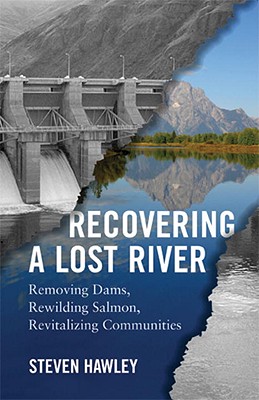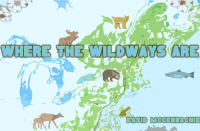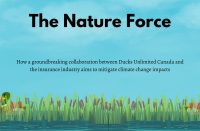In Recovering a Lost River: Removing Dams, Rewilding Salmon, Revitalizing Communities, author Steven Hawley leads readers on a meandering journey up the Snake River – dropping in on the communities it threads through – to its wilderness headwaters in Idaho. The largest tributary of the Columbia River, the Snake was once one of the continent’s most productive salmon-bearing rivers, with salmon returns estimated to number in the tens of millions each year.
In Recovering a Lost River: Removing Dams, Rewilding Salmon, Revitalizing Communities, author Steven Hawley leads readers on a meandering journey up the Snake River – dropping in on the communities it threads through – to its wilderness headwaters in Idaho. The largest tributary of the Columbia River, the Snake was once one of the continent’s most productive salmon-bearing rivers, with salmon returns estimated to number in the tens of millions each year. Today its salmon runs are only a shadow of their former abundance and the species has been extirpated from some tributaries altogether.
The cause of this decline, according to Hawley, is the series of dams constructed on these rivers beginning in the late 1800s. Along its 2000 kilometre route from the Rocky Mountains of British Columbia to its mouth in Oregon, the Columbia is spanned by 14 hydroelectric dams. An additional four dams hinder fish passage on the Snake. Hawley documents in detail the history of these developments, from land expropriation by early settlers and entrepreneurs to the US Army Corps of Engineers mandate to pursue “total use” of North American rivers.
He also describes the concomitant disappearance of salmon that occurred as dams sprang up. Although cause and effect might seem apparent, many salmon researchers dispute claims that the dams have affected fish populations. Hawley’s meticulous research takes him deep into government documents indicating that current salmon policies are based on flawed science and shady liaisons. The result is an exposé of corporate and government collusions, cover-ups and subsidies that threaten salmon populations on the Columbia and Snake Rivers with extinction and undermine the quality of life of watershed residents.
The solution he presents draws likely and unlikely inspiration from rivers in other parts of North America. Challenging the notion that dams are a necessary public good, he suggests that wherever possible they be torn out, and describes the natural abundance and community life that flourishes in the absence of dams. He shows this to be true regardless whether the river is a pristine Alaskan torrent or Maine’s Kennebec River – where dam removal and restoration efforts have revived a river once so dammed and polluted that little riverine life remained.
He also debunks the theory hydroelectricity should be considered green energy. In illustrating how it leads to species extinction, he succeeds in demonstrating that hydroelectricity is far from the sustainable power source that many believe it to be. Yet in calling for the removal of dams, he skirts a meaningful discussion of how the power lost through dam removal could be supplied. This overlooks a fundamental conundrum that will inevitably arise in many readers’ minds: if not hydropower, what is the acceptable alternative? Faced with tough choices, are we better off compromising river ecosystems with hydroelectric dams or by mining hydrocarbons and nuclear materials to satiate our energy needs in other ways?
Although the depth of research in this book is impressive, at times the rigour of the research and level of detail in the information Hawley presents works against him. Keeping track of facts, figures, personalities and agencies involved in the story and deciphering Hawley’s linguistic flourishes can at times make following the storyline a challenge. The alphabet soup of acronyms he wades into, his enormous cast of characters and a tightly packed series of events at times obscure the central message. Yet despite the density of information that can sometimes slow reading to a crawl, Hawley’s book is by and large entertaining and highly readable, thanks to his skill in making the issues personal. By bringing to life the characters he encounters and the landscapes he visits, Hawley offers a route into deeper understanding of the issues he describes. Ultimately, he calls for “a more generous, balanced and complex vision for the range of places that collectively comprise our ideas about home.” Hard words to argue with.
Recovering a Lost River, Steven Hawley, Boston: Beacon Press, 2011, 256 pages
Subscribe now to get more book reviews in your mailbox!
Reviewer Information
Emily McGiffin is a consultant and MSc. candidate living in northwest BC. Her first book of poetry will be published by Brick Books in spring 2012.













